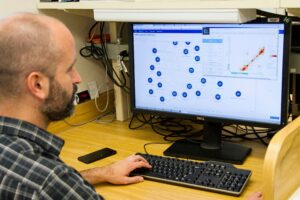
In a groundbreaking development for medical science, researchers have unlocked a hidden reservoir of potential antibiotics within soil microbes. Published in Nature Biotechnology, this innovative approach bypasses the traditional need to culture bacteria in laboratories, instead extracting large DNA fragments directly from soil samples to piece together genomes of previously inaccessible microbes. From a single forest soil sample, scientists have generated hundreds of complete bacterial genomes and identified two promising new antibiotic leads.
The announcement comes at a crucial time as antibiotic resistance continues to threaten global health, and pharmaceutical pipelines for new drugs run dry. The soil beneath our feet, long known to be a treasure trove of microbial diversity, may hold the key to discovering new lifesaving compounds.
Unlocking Microbial Dark Matter
Soil is an obvious choice for microbial exploration, given its status as the planet’s largest and most biodiverse bacterial reservoir. A single teaspoon of soil can contain thousands of different bacterial species. Historically, many frontline antibiotics have been derived from the small fraction of soil bacteria that can be cultured in laboratories. However, the vast majority remain unexplored due to the limitations of traditional culturing techniques.
According to Sean F. Brady, head of the Laboratory of Genetically Encoded Small Molecules at Rockefeller University, “We finally have the technology to see the microbial world that has been previously inaccessible to humans. And we’re not just seeing this information; we’re already turning it into potentially useful antibiotics. This is just the tip of the spear.”
Revolutionary Techniques in Genomic Sequencing
The breakthrough involved optimizing methods to isolate large, high-quality DNA fragments directly from soil. By pairing this advancement with long-read nanopore sequencing, researchers like Jan Burian, a postdoctoral associate in Brady’s lab, have produced continuous DNA sequences tens of thousands of base pairs long—far surpassing previous technologies.
“It’s easier to assemble a whole genome out of bigger pieces of DNA, rather than the millions of tiny snippets that were available before,” Brady explains. “And that makes a dramatic difference in your confidence in your results.”
Using a synthetic bioinformatic natural products (synBNP) approach, the team bioinformatically predicted chemical structures of natural products directly from the genome data, then chemically synthesized them in the lab. This process allowed them to convert genetic blueprints from uncultured bacteria into actual molecules, including two potent antibiotics.
New Antibiotic Leads and Broader Implications
From their single forest soil sample, the team produced 2.5 terabase-pairs of sequence data, marking the deepest long-read exploration of a single soil sample to date. Their analysis uncovered hundreds of complete contiguous bacterial genomes, more than 99 percent of which were new to science, spanning 16 major branches of the bacterial family tree.
“The two lead compounds discovered could translate into potent antibiotics. One, called erutacidin, disrupts bacterial membranes through an uncommon interaction with the lipid cardiolipin and is effective against even the most challenging drug-resistant bacteria. The other, trigintamicin, acts on a protein-unfolding motor known as ClpX, a rare antibacterial target.”
Brady emphasizes that these discoveries are just the beginning. The study demonstrates that previously inaccessible microbial genomes can now be decoded and mined for bioactive molecules at scale without culturing the organisms. Unlocking the genetic potential of microbial dark matter may also provide new insights into the hidden microbial networks that sustain ecosystems.
Future Prospects and Applications
While the primary focus is on developing new therapeutics, the implications of this research extend beyond medicine. “We’re mainly interested in small molecules as therapeutics, but there are applications beyond medicine,” Burian notes. “Studying culturable bacteria led to advances that helped shape the modern world, and finally seeing and accessing the uncultured majority will drive a new generation of discovery.”
As researchers continue to explore this microbial frontier, the potential for new discoveries remains vast. The methods developed could be adapted to virtually any metagenomic space beyond soil, opening doors to a new era of microbiology and biotechnology.
The move represents a significant step forward in the fight against antibiotic resistance and highlights the importance of continued investment in innovative research techniques. As science delves deeper into the microbial world, the promise of new, effective treatments becomes increasingly tangible.







